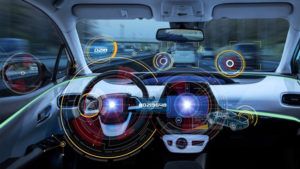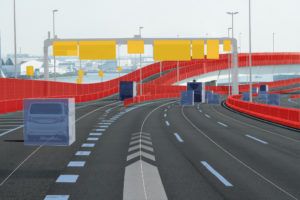At the IAA Frankfurt Motor Show in Germany, navigation and traffic information company TomTom revealed that its navigation system has been integrated with the Microsoft Connected Vehicle Platform and announced a collaboration with software developer Hella Aglaia.
TomTom’s navigation usage and diagnostics data can now be sent from vehicles to Microsoft’s Azure cloud computing platform where the data can be used by automakers to generate data-driven insights to deliver tailored services and to make better informed design and engineering decisions. The location intelligence, which also includes TomTom’s traffic information and HD map services, can also be used in vehicles for navigation apps, as well as context while driving autonomously. In December 2016, TomTom made its location-based services available on Azure, and in February this year, the two firms announced that TomTom had been chosen as the location data provider for mapping services across Microsoft solutions, including Azure Maps, Bing, Cortana, Windows and future offerings. 
“Our integration with the Microsoft Connected Vehicle Platform means that automakers can get access to precise and reliable navigation and driving behavior data easily, while of course adhering to privacy principles,” said Cees van Dok, chief product officer at TomTom. “This data could, for instance, be used to predict the range of an electric vehicle based on driving behavior and planned route more accurately; or to work out, based on navigation behavior, what connectivity package for online navigation would be best suited for a driver. This is a game changer for OEMs.”
Tara Prakriya, partner group program manager of Microsoft’s Connected Vehicle Platform, said, “With our Connected Vehicle Platform serving as the digital chassis of the car, telematics, infotainment, and data from sensors are all connected to the cloud in the same way, effectively solving the pain point of managing different systems for scale, security, and reliability. We’re delighted to add navigation intelligence data from TomTom to MCVP.”

German computer vision software supplier Hella Aglaia has also announced a collaboration with TomTom to update its High Definition (HD Map) in real-time using crowdsourced camera data from vehicles. As part of the collaboration, Hella Aglaia will use TomTom’s AutoStream map delivery system to access the latest HD Map on demand and will use the HD Map in the vehicle for accurate localization. Hella Aglaia will also share processed crowdsourced camera data to TomTom’s cloud-based mapping system for autonomous driving, updating the HD Map in real-time using Roadagrams. AutoStream then delivers the updated map data back to the vehicle.
Willem Strijbosch, TomTom’s head of autonomous driving, said “We believe that an up-to-date HD map is critical for safe and comfortable autonomous driving. By joining forces with Hella Aglaia we are offering automakers and Tier 1s the possibility to move towards faster HD Map updates.”
Hella Aglaia’s managing director, Kay Talmi, added, “By achieving compatibility between TomTom’s cloud-based mapping service and our in-vehicle camera software we will be able to offer automakers a new option for HD Map updates from their fleet while keeping the flexibility of our software-only-solution which easily scales from ADAS to automated driving.”





